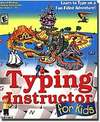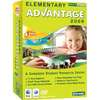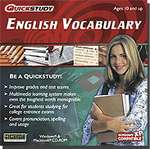Electronic File
An electronic filing system is one where correspondence and other documents are kept on computers instead of using paper-based storage systems, such as filing cabinets and files. We need different equipment. Computers create different kinds of files for filing purposes according to the software used. Different software is required for different jobs. Electronic filing allows us to arrange files in a number of different ways without having to file them in different places (Mand, 2009).
Types of categories
Alternative Assessment ideas
An alternative assessment idea is, in many cases, the most appropriate means for determining whether students have indeed mastered these complex skills. A number of assessment ideas for teachers have emerged from all this. These ideas, or activities, are thought to be useful for measuring and enhancing critical thinking skills and the application of knowledge. Examples of alternative assessment include:
- Products: These are tangible, concrete items that students create through either the written, visual, or auditory media. In this method, students are to make drawings of themselves performing physical activity. Students created brochures advertising the benefits of physical activity for parents and friends, or colleges of pictures and photos showing healthy habits.
- Process-focused tasks: these show the thinking process and learning strategies students use as they work. For example, students might write down and explain how or why they designed a game or movement sequence.
- A portfolio: is a collection of student work and additional information gathered over a period of time that demonstrates learning progress. Portfolios may include results from the traditional assessment, product tasks, process-oriented tasks, and other information.
- Performances: these are observable affective or psychomotor behaviors put into action. For example, students may demonstrate their abilities to throw by stepping off with the opposite foot and their cooperation with others during an activity. Therefore, alternative assessment ideas determine students knowledge, skills, and attitudes in ways that are enriching, motivating, and more instructional than a written test (Mand, 2009).
I used this method of alternative assessment ideas during my service learning hours, and it was amazing because students were motivated to work on and improve their sequences. They easily evaluated their own performances according to a simple rule, and they were tougher on themselves. They developed skills relating to analyzing and critiquing their own work, not to mention their own physical skills as they worked on the assessment task. The class taught was of the fifth-grade students.
Articles
Articles are reading materials that help students improve their reading abilities as well as their vocabulary, thus gaining confidence when speaking. Examples of articles include magazines, journals, short stories, and newspapers. All these materials are available in my school area.
A written journal kept by students over the semester provides a cumulative, anecdotal record of activities done, student self-observation, and milestones accomplished. This material makes the student understand who will read the journal or the magazine and how it will be used as an assessment.
I used this method in teaching with the fifth-grade students, and they really enjoyed all the lessons we shared together by reading various articles, and for sure, their reading confidence was highly improved.
Computer Software programs
Cluefinders Math Adventures
Primary -2nd and 3rd Grade

As children learn to find the missing treasures through these games, they get to learn every challenge that exists in math activities. They expand their skill levels in solving the most difficult problems. Therefore, teachers could put this software into practice to help the student learn to develop problem-solving skills such as number computation, multiplication, division, fractions, decimals, graphs, and tables.
Typing instructor for kids

This software helps both young kids and even grown-up students to improve their typing skills such as speed and typing methods. Therefore, in the educational environment, teachers use this software to improve the students computer knowledge as they grow up for future use because computer skills are very vital in the current world.
Elementary Advantage
3rd to 5th Grades

In this software, students are enlightened with complete resources focusing on fun and creative state, important lessons, and exercises. Thus, through the use of this software, teachers are in a better position to help their learners to assess the mysteries of history and science through fun-filled activities such as reading and writing, phonics and grammar, and even typing.
English vocabulary
Middle-class students

This computer software program is designed in a way that assists students to review their spelling, carry out real-time questions, and search for database words, thus being able to master the right words on all occasions.
Most of this computer software has been used in class, and it all went well with the students as they enjoyed them very much. They improved their spelling abilities and knew some typing knowledge.
Instructional games
Games in education have become a large topic of interest in the field of instructional design. Instructional games focus on the balance between entertainment and education, and such balance is derived by facilitating collaboration between subject matter experts and experts in interactive entertainment and instructional design (Carrol, 2007).
Examples of instructional games
- Crossword puzzles: This game can be printed and completed by students online by plugging their own words into free puzzle creation software. Teachers use this to help students review their exercises, thus improving their vocabulary and expanding their knowledge in various fields.
- Memory card game: students flip the cards placed on the table facing down, and if the cards make a pair, they remove them from the table. If they fail to march, another student gives it a try. Teachers use this to help those students who have the lower memorizing ability.
- Group quiz game: Students join the group from the television as members where the quiz has many correct answers, and the aim of the game is for students to provide as many answers as possible. Therefore, teachers use this game to encourage cooperation and collaboration among students (Carrol, 2007).
- Math video instructional development games: This game helps students with learning difficulties with various chances to react to a specific learning activity. The game is used by teachers to motivate students to perform math skills in a game format.
I have used these instructional games in the class with the fifth-grade students, and they seemed to like the game as I saw them enjoy, especially the group quiz game. These instructional games have improved most of the students vocabulary and performance in mathematics.
Field Trips-Outside of school grounds and In-house Field Trips on school grounds

A trip around the school block
When my students were learning map skills, we would take a walk around the block at school. The students drew maps of the neighborhood, filled in streets and buildings, and made a compass rose. Also, students got to learn parts of plants, and this proved to be an easy, interesting, and relevant way to see the variety of roots, stems, leaves, flowers, and fruits that can grow in an area (Blake, 2008).
Field trips on school grounds
This provided students with real-world learning experiences. They got to observe birds, study butterflies, and classify objects. For the field trips to be successful, students made a student-designed field guide of the schoolyard. Took photographs and made drawings of interesting plants, animals, or geological areas and provided information on each.
National parks and museum trips
Taking students to national parks enhances their knowledge in various fields such as science, geography among others. Also, they get to improve their social and behavioral skills. Therefore as a teacher, I advised them to record the important things they saw for future reference after the visit.
Web-based virtual field trips
This is an in-house field trip where students tour various parts of the world, all from their own classroom (Adam, 2005). These web-based virtual field trips bring experience that they might never have without technology. The students can form groups with other students around the world to engage in educational and service-oriented projects.
I used this field trip method in teaching to enhance the students social and cognitive skills and also expose them to life outside the classroom. The students had fun and learned a lot while they were in the field because they got a chance to apply what they had learned in class into practice.
Reference List
Adam, F. (2005). Education outside the classroom. New York: Sage.
Blake, R. (2008). Inside/Out: Environmental Science in the Classroom and the Field, Grades 3-8. New York: Press.
Carrol, K. (2007). A Guide to Great Field Trips. Chicago: Press.
Mand, C. (2009). Outdoor education. USA: Merrill Publication Company.